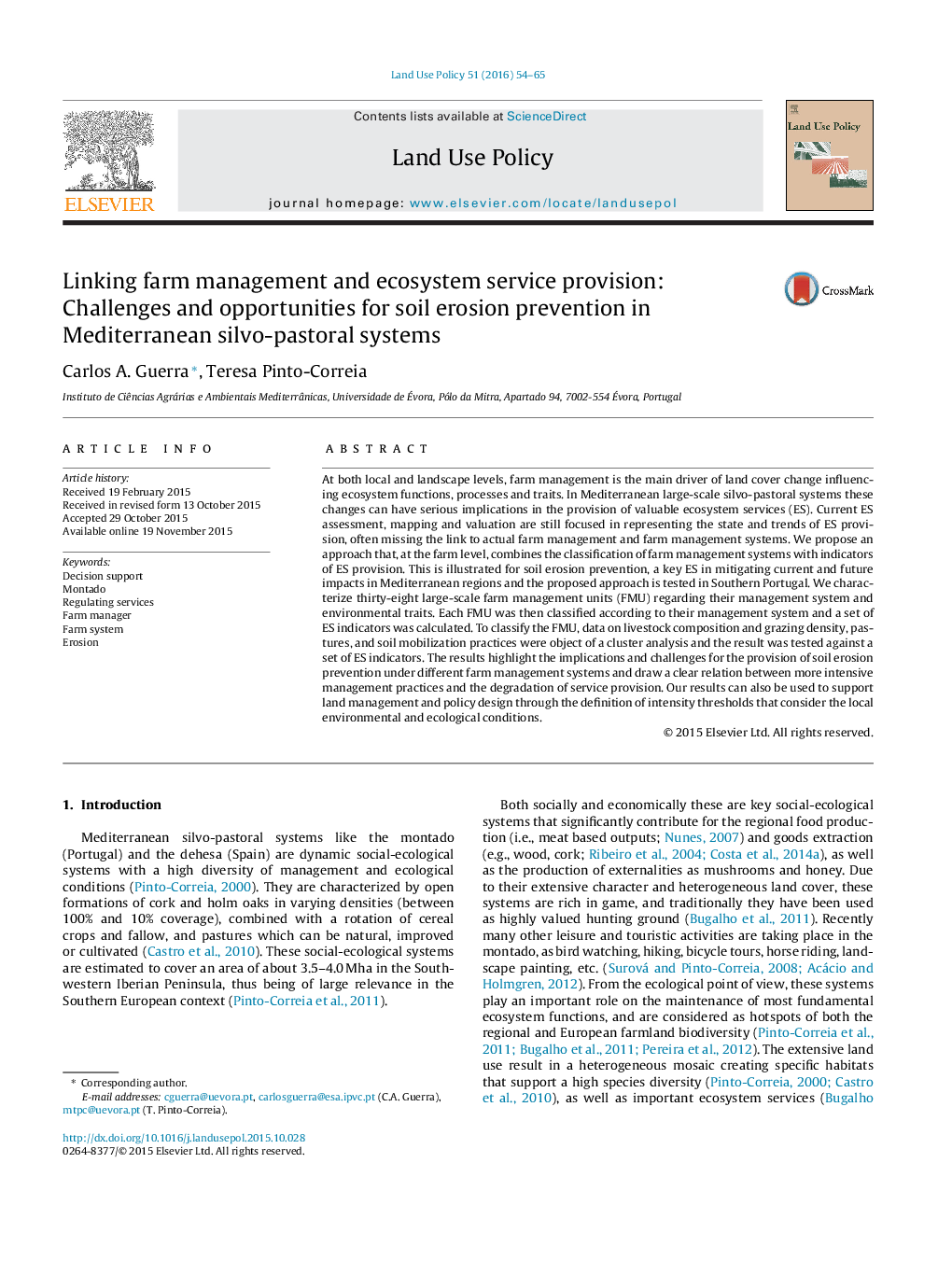| کد مقاله | کد نشریه | سال انتشار | مقاله انگلیسی | نسخه تمام متن |
|---|---|---|---|---|
| 92894 | 160101 | 2016 | 12 صفحه PDF | دانلود رایگان |
• Soil erosion prevention was modelled and compared with land management practices in a Mediterranean silvo-pastoral system.
• Eight process based ecosystem service indicators were calculated and their values and within year dynamics assessed.
• Eight land management types were described to identify contrasting management practices and how they relate to ecosystem service provision.
• Introducing the farm system understanding, modelling and evaluation in the assessment of the ecosystem services makes it possible to incorporate land management decisions and practices at the highest detail level.
At both local and landscape levels, farm management is the main driver of land cover change influencing ecosystem functions, processes and traits. In Mediterranean large-scale silvo-pastoral systems these changes can have serious implications in the provision of valuable ecosystem services (ES). Current ES assessment, mapping and valuation are still focused in representing the state and trends of ES provision, often missing the link to actual farm management and farm management systems. We propose an approach that, at the farm level, combines the classification of farm management systems with indicators of ES provision. This is illustrated for soil erosion prevention, a key ES in mitigating current and future impacts in Mediterranean regions and the proposed approach is tested in Southern Portugal. We characterize thirty-eight large-scale farm management units (FMU) regarding their management system and environmental traits. Each FMU was then classified according to their management system and a set of ES indicators was calculated. To classify the FMU, data on livestock composition and grazing density, pastures, and soil mobilization practices were object of a cluster analysis and the result was tested against a set of ES indicators. The results highlight the implications and challenges for the provision of soil erosion prevention under different farm management systems and draw a clear relation between more intensive management practices and the degradation of service provision. Our results can also be used to support land management and policy design through the definition of intensity thresholds that consider the local environmental and ecological conditions.
Journal: Land Use Policy - Volume 51, February 2016, Pages 54–65
